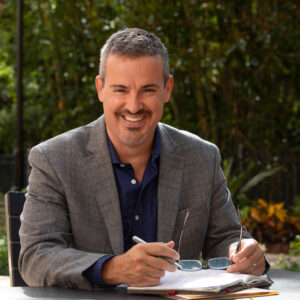Ernest Hemingway said he wrote on “the principle of the iceberg”—1/8th above the surface, 7/8thbelow. For him, less is more, the meanings more powerful because they’re not stated, but implied. That’s why Hemingway has been praised for his art of omission, knowing what to leave out. It’s why the novelist Anthony Burgess honored him for teaching writers “how to use the silences between words.”
It’s hard to write like this. Hemingway did it brilliantly as a young man in his novels and stories of the 1920s, and sometimes he was successful in books he wrote later in his career. But the focus, concentration, and discipline to adhere to and execute this demanding aesthetic: it’s difficult. I’m reminded of Miles Davis’s admiration for Louis Armstrong’s genius on the trumpet—that he not only could play the notes but had the rare capacity to “perform the spaces” as well.
Scholars have studied sources that Hemingway drew upon and learned from, including his journalism for the Kansas City Star and friendships with Gertrude Stein, Ezra Pound, and James Joyce. He mastered multiple influences and honed a simple-seeming style that’s almost esoteric in its complexity and sophistication. Hemingway can’t be imitated. If you try to write like him, you’ll produce a parody, a weak and ineffectual echo of his voice.
Another seminal influence on Hemingway was the King James Bible, but it’s often overlooked because Bible reading is less common now than it was 125 years ago. Hemingway was born in Oak Park, Illinois, in 1899, a strongly Protestant community, and his parents regularly attended the Congregational church. The family read the Bible together and said prayers every day and evening. At church and at home, the King James Bible was a constant presence in their lives, scrutinized in private and read out loud, and Hemingway gained much from it. The KJV taught him the precision and resonance of plain, pointed language and parallel structure—and the force that writing could achieve through gaps and omissions.
I found myself thinking about Hemingway recently when, in the middle of Luke’s gospel, I read once again, in chapter 10, the Parable of the Good Samaritan. You’ll remember how it begins, the dramatic situation:
25 And, behold, a certain lawyer stood up, and tempted him, saying, Master, what shall I do to inherit eternal life?
26 He said unto him, What is written in the law? how readest thou?
27 And he answering said, Thou shalt love the Lord thy God with all thy heart, and with all thy soul, and with all thy strength, and with all thy mind; and thy neighbor as thyself.
28 And he said unto him, Thou hast answered right: this do, and thou shalt live.
29 But he, willing to justify himself, said unto Jesus, And who is my neighbor?
The lawyer is implying that we typically set limits to the people we view as neighbors: some count, some don’t. Jesus replies through a story:
30 And Jesus answering said, A certain man went down from Jerusalem to Jericho, and fell among thieves, which stripped him of his raiment, and wounded him, and departed, leaving him half dead.
31 And by chance there came down a certain priest that way: and when he saw him, he passed by on the other side.
32 And likewise a Levite, when he was at the place, came and looked on him, and passed by on the other side.
33 But a certain Samaritan, as he journeyed, came where he was: and when he saw him, he had compassion on him,
34 And went to him, and bound up his wounds, pouring in oil and wine, and set him on his own beast, and brought him to an inn, and took care of him.
There’s some specificity here—Jerusalem, Jericho, Levite, Samaritan. And it’s a “certain” man, a “certain” priest. There’s action in the verbs: stripped, wounded, and departed, as well as repetition and parallel structure. The Samaritan, “as he journeyed,” probably is tired, looking forward to his destination, to getting there at last.
The Samaritan’s response to the wounded man is soul-stirring for us as readers. That’s the effect, but it’s not made explicit: we aren’t told this is what we should feel. It’s as if Luke were following Hemingway’s injunction never to include the “wow” in a story. The Samaritan sees the man and immediately “has compassion on him.” He has it, possesses it, it’s in him. There’s no hesitation, no reflection.
This is the parable’s message: you see someone whose condition calls for aid and support, and you respond. You’re not doing something that’s important because it makes you feel better and reassures you that you’re a good person. The lesson is about action on behalf of someone else, about doing good.
Jesus doesn’t say any of this. It’s not in the language Luke gives him. But then again it is. I’m sorry to be paradoxical, but that’s how it’s done. The impact would be less momentous if it were all spelled out, as I’m doing here.
Luke concludes by returning to Jesus and the lawyer:
35 And on the morrow when he departed, he took out two pence, and gave them to the host, and said unto him, Take care of him; and whatsoever thou spendest more, when I come again, I will repay thee.
36 Which now of these three, thinkest thou, was neighbor unto him that fell among the thieves?
37 And he said, He that shewed mercy on him. Then said Jesus unto him, Go, and do thou likewise.
There’s nothing about the lawyer’s response, and that’s because Luke wants us to be thinking not about him, but about ourselves. The shock of recognition is experienced in the space Luke obliges us to fill with our self-examination. Would we do likewise?
At the close of Hemingway’s great story “Indian Camp,” a father and son say this:
“Is dying hard, Daddy?”
“No, I think it’s pretty easy, Nick. It all depends.”
Not a word of comment from the narrator. Two short paragraphs of description come next, and the story ends. Hemingway could have said more, and some readers may wish he had. But for him, a good writer knows what not to say, an insight he absorbed from years of experience reading and listening to the Bible. We remember the New Testament parables and the best of Hemingway’s stories from what’s in them and, just as much, from what isn’t.
William E. Cain is Mary Jewett Gaiser Professor of English at Wellesley College, where he enjoys teaching courses on Ralph Waldo Emerson, Henry David Thoreau, and other American writers. His recent publications include essays on Edith Wharton and Ernest Hemingway.





